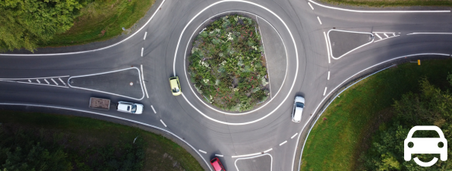The Problem With ULEZ, LTNs & 15-minute Cities

You may not have noticed, but there’s a silent battle taking place on our streets. The car is under attack, and some would argue that freedom of movement, ease of travel and civil liberties could be collateral damage.
A personal car might spend as much as 95% of its time parked up, but when it’s go-time, it transforms from a static object to a mobile companion you can depend on, confide in and call upon when in need. It’s a beast of burden to take you, your family and friends and your stuff to anywhere, any time. It can transport you on adventures, show you the world, or retrace your route down memory lane. It could be a vehicle of passion, a mood-changer, a distraction, a fun pastime – indeed going for a drive, just for the heck of it, is proven to be therapeutic.
And it represents freedom.
But that freedom comes at a price. Not just the obvious cash cost of owning and running a vehicle, but the carbon footprint of producing it, the emissions and particulate pollution resulting from using it, and the literal carnage should, God forbid, things go badly wrong.
Well-meaning legislation, programmes and trial projects seek to curtail the would-be catastrophic side effects on urban societies of the mechanised marvels, and address the problems of urban congestion and air pollution.
Leaving aside the conundrum of the car itself (whether it truly is our friend or foe), what of the restrictions themselves? What are they, what do they mean for you, and could they be misguided? Critics argue that they are ineffective in addressing the underlying problems, and in some cases, even exacerbate them. Do they have a point?
Ultra Low Emission Zone (ULEZ)
The Ultra Low Emission Zone (ULEZ) was introduced in Central London, in April 2019 to operate in addition to the existing Congestion Charging Zone. You’re okay to take a ULEZ-compliant car into the zone (petrol cars with Euro 4 Emissions standards, typically from 2005 onwards and diesel cars with Euro 6 standards which were applied from 2015). If your car doesn’t meet that criteria, you have to pay a £12.50 daily charge to drive it there.
ULEZ was expanded to the rest of Inner London, up to the North and South Circular Roads in October 2021. In November of 2022, it was announced that it would further expand to cover the whole of Greater London, which in some cases extends zone right up to the M25 Ring Road.
While there are proven air quality benefits to the current ULEZ areas, Transport for London’s (TFL) own report confirms that the benefits of extending it further are marginal at best. Set against an investment of over £350 million (£250m to set up the infrastructure for enforcing ULEZ, and £110m for a scrappage scheme), many argue the money would be better used in other ways, such as improving public transport.
Because of the much sparser public transport connectivity in outer London, some parts of which are positively rural in nature, the expansion will hit the poorest hardest as they tend to run older, often diesel, cars that they need in order to get around. For example, workers at Heathrow Airport (which will fall into the zone) have already complained, social care will be impacted as care-workers and family members will struggle with the daily charge, plus businesses and particularly tradesmen (many running older diesel vans) warn they will struggle to pass on the costs to customers, and possibly have to limit or even fold their businesses. Classic car owners, clubs, events and even supporting industry within the M25 area will also be impacted, as only cars older than 40 years, and registered as historic vehicles, are exempt. ‘Modern classics’ from the mid-80s and 90s will have to pay the ULEZ charge.
There is a scrappage scheme, however it’s only available on the basis of meeting certain criteria, such as receiving benefits and disability allowances. Even then, the grant is typically only £2000 which would not be enough in many cases to purchase an appropriate ULEZ-compliant replacement vehicle.
Low Traffic Neighbourhoods (LTNs)
Low Traffic Neighbourhoods, commonly known as LTNs, are when local residential streets are blocked off by bollards or ‘plant boxes’ in an attempt to divert through traffic onto major roads instead. The intention being to reduce congestion, pollution and road traffic incidents in residential streets.
However, LTNs have been criticized for being poorly designed and implemented, causing unintended consequences such as increased traffic on surrounding roads, worsening emissions and lengthening journey times for drivers.
Far from being happy about the restrictions, some residents have even expressed concern that LTNs could increase social isolation, as they limit access and deter friends and family from visiting. The introduction of LTNs has also been criticised for being poorly communicated, with residents protesting that they were not consulted or informed about the changes until they were already in place.
15-minute cities
On paper the notion of ’15-minute cities,’ as it is described, sounds like a terrific concept. It presents a scenario where all essential services and amenities should be within a 15-minute walk or bike ride from your doorstep. Such a programme is to be trialled in the city of Oxford, where the town will be subdivided into zones.
Resident motorists will only be given a limited number of passes per year to move directly between zones, exceeding which will result in fines. Daily commuters that work in other zones, would be expected to exit onto outer ring roads for access the other zones – essentially having to go the long way around to work, via the perimeter of the city.
The idea might be workable to an extent if our existing towns were already designed and laid out in such a way that services and amenities were actually within 15 minutes. As most will testify that’s not really the case. Thus, the idea has been criticized for being unrealistic and unachievable, particularly in larger cities.
For example, while your local GP might be within 15 minutes, the nearest hospital might be much further away, the same could be said for education facilities such as colleges. Accessing specialist services and businesses on a regular basis could also be difficult. In fact, 15-minute cities are also deemed a threat to the survival of small businesses, as they would have to rely solely on local residents.
There is of course a much bigger socio-economic detrimental concern here too, that of ghettoization, and of restricting, limiting and isolating societies, resulting in poorer integration and the further embedding of mistrust, suspicion, prejudices, altercations and oppression of certain communities, particularly those regarded as immigrant populations.
Holistic approach required
While each of these concepts have merits and do attempt to pursue positive aims for the betterment of city-dwellers, it seems that in reality they are either unworkable, or potentially stifling both socially and economically.
The conditions and circumstances in which they could be effectively deployed need to be thought-out in more detail. For instance, ULEZ makes sense if there’s an excellent public transport system available; LTN’s are suitable in specific locales and at certain times, such as mornings and afternoons outside schools; and 15-minute cities would only be meaningful if applied to brand new towns designed and laid-out with that objective from the outset.
This sort of holistic approach would take into account the needs and concerns of all stakeholders, rather than proposing blanket, one-size-fits-all, solutions. Meanwhile let’s continue to focus on trying to move more motorists to cleaner forms of personal transport, such as modern and efficient hybrid and electric cars to ease concerns over pollution and safety in urban environments.
Maybe this way, we’ll get to keep our right to freedom of movement.
Related Reading:
ULEZ Compliant Cars For Any Budget






